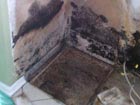
It is very difficult to tell whether a mold or mold spore is dangerous just by looking at it. Also, mold can easily grow in your home without your realization until a large portion of the house is infested. Mold, which can grow in just about any part of the house, can be very costly to detect and to eradicate. The best way to keep mold from infesting your home is to be keen about the indoor moisture levels.
Here are a few steps homeowners can take to prevent the growth of molds within the house:
Look out for potential mold prone
Those areas in your house that are prone to retaining high moisture levels are prone to mold infestation. These include the walls, basement, beneath the ceiling tiles or on the floor. Depending on the area that is likely to attract mold, you may eradicate the moisture using several methods. For example, you might want to dry or replace wet roof tiles, repair the gutter or get rid of a damp carpet. If you suspect mold in areas that you cannot easily reach such as behind walls, it is advisable to use the services of mold remediation contractors to get rid of the forming mold before it spreads.
Ventilate your house adequately
A poorly ventilated house is a sure way of trapping moisture and thus exposing the house to the risk of mold formation. Daily activities such as cooking, using dehumidifiers or doing laundry can create significant amounts of moisture in the house. It is a good idea to keep the windows open during these activities. You might also want to direct stove, laundry, AC or dehumidifiers vents to the outside to ensure the vapor is directed outwardly and not trapped in the house.
Keep the home dry throughout
Leaving wet stuff lying around the house will create an environment suitable for mold growth. Allow wet clothes to dry adequately, immediately dry spills on the carpet and leave the windows open when you shower. In case of water damage caused by floods, seek the help of water damage restoration experts immediately (preferably between 24 and 48 hours). Other hazards to look out for are leaking pipes, spills on the floor, AC and dehumidifiers which tend to trap moisture and broken gutters.
Regulate humidity within the house
It is simple to measure the amount of humidity in your home using a moisture meter that you can buy from local stores. Signs of high levels of humidity vapor on walls and windows. The U.S. Environmental Protection Agency guidelines advise that safe humidity levels be between 30% and 60%. Wipe out any vapor on walls and windows and find out the cause of the increased humidity.
Make your home resistant to mold
If you are building or renovating your home, one of the most effective ways of preventing molds is to use fiberglass drywall. Unlike the conventional drywall that contains paper, the fiberglass wall does not have any paper and as such, does not retain moisture. Use this type of wall in areas such as the kitchen, bathrooms and laundry area where there is significant amount of moisture.


